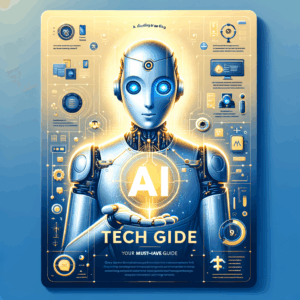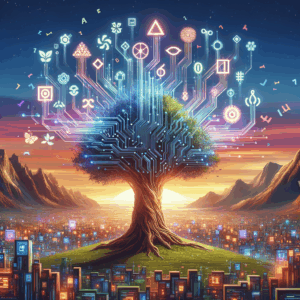
AI Transforms Stunning AR And VR Design Concepts Efficiently
- Understanding the Synergy Between AI, AR, and VR
- The Evolution of Design in AR and VR
- Enhancing Creativity with AI
- Practical Applications of AI in AR and VR Design
- AI-Driven Tools for Designers
- The Design Workflow: From Concept to Reality
- Personalized Experiences in AR and VR
- Overcoming Design Challenges with AI
- The Future of AI in AR and VR Design
- Case Studies: Success Stories in AI-Enhanced Design
- Ethical Considerations in AI-Driven Design
- Common Misconceptions About AI in Design
- The Role of Collaboration in AI-Enhanced Design
- The Importance of User-Centric Design
- Conclusion
- FAQs
- References
Understanding the Synergy Between AI, AR, and VR
Artificial Intelligence (AI) is revolutionizing various fields, and design is no exception. It plays a pivotal role in enhancing Augmented Reality (AR) and Virtual Reality (VR). This blog explores how AI drives innovation in AR and VR design concepts efficiently.
Imagine creating an immersive environment where the real and digital world harmoniously blend. Designers now use AI to streamline processes, improve user experiences, and develop stunning visuals. So, why should we care about this transformation? Let’s break it down.
The Evolution of Design in AR and VR
Over the past decade, both AR and VR have seen extraordinary advancements. With rapid technological growth, designers now have tools that were unimaginable just a few years ago. AI integrates seamlessly into these technologies, providing new dimensions to design.
In AR, digital information overlays the physical world, enhancing user experiences in real-time. VR, on the other hand, immerses users in entirely virtual environments. AI facilitates these experiences by allowing systems to anticipate user needs and create more personalized interfaces.
Enhancing Creativity with AI
AI not only accelerates design processes but also boosts creativity. It learns from diverse data sets and generates innovative concepts. For designers, this means more room for exploration. AI can suggest color palettes, layouts, and even entire scenes based on current trends and user preferences.
For instance, generative design algorithms analyze thousands of design options quickly. Designers can then select the most appealing choices. This approach not only saves time but also enhances creativity.
Practical Applications of AI in AR and VR Design
Let’s look at how AI contributes to AR and VR design practices practically. Its applications range from rendering realistic environments to creating interactive experiences. Here are a few key areas:
1. Real-Time Feedback: AI tools analyze designs and provide instant feedback. This feature enables designers to make changes on the spot, enhancing efficiency.
2. User Interaction: AI algorithms can learn from user behavior. This learning helps designers create more intuitive and engaging experiences.
3. 3D Model Generation: Creating intricate 3D models can be time-consuming. AI accelerates this by automating tedious tasks, allowing designers to focus on higher-level creativity.
AI-Driven Tools for Designers
Several AI-driven tools have emerged to make AR and VR design easier. Here’s a look at some popular options:
| Tool Name | Primary Use | Unique Features |
|——————|———————————–|———————————————|
| Unity | Game development and simulation | Real-time rendering and cross-platform support |
| Blender | 3D modeling | Open-source, supports AI plugins |
| Adobe Aero | AR creation | User-friendly interface for designing AR experiences |
| SketchUp | 3D design and modeling | Simple interface, great for beginners |
| NVIDIA Omniverse | Real-time collaboration | Integration with AI for realistic environment creation |
These tools leverage AI to enhance visual quality and streamline the design process.
The Design Workflow: From Concept to Reality
An efficient workflow is vital for successful design. AI plays a significant role in every step of this process. Here’s how it unfolds:
1. Research and Ideation: AI analytics help identify design trends and preferences, enabling designers to brainstorm effectively.
2. Prototyping: AI assists in the rapid creation of prototypes. This allows for quicker iterations and design validation.
3. Testing: AI can simulate user interactions, providing insights into potential usability issues. Designers can address these before finalizing the project.
4. Finalization: Once the design is complete, AI tools help refine the visual elements. Designers can then prepare the project for deployment.
Personalized Experiences in AR and VR
Personalization is key in enhancing user experiences. AI enables designers to tailor interactions based on user preferences and behaviors. These tailored experiences keep users engaged and improve retention rates.
Take AR navigation apps as an example. They adapt based on the user’s location, interests, and past usage patterns. This level of personalization makes the technology more effective and user-friendly.
Overcoming Design Challenges with AI
Every design project comes with its own set of challenges. AI can alleviate many of these hurdles. Common challenges include:
– Time Constraints: AI tools automate repetitive tasks, allowing designers to focus on creative aspects.
– Skill Gaps: For novice designers, AI can provide guidance. It suggests improvements and teaches effective methods.
– Resource Limitations: Smaller teams can still compete. Accessible AI tools level the playing field by making professional-grade features available to everyone.
The Future of AI in AR and VR Design
As technology evolves, so does the potential for AI in design. Upcoming AI advancements promise even greater efficiencies. For example, improved machine learning algorithms could lead to hyper-personalized experiences.
Furthermore, we might see AI collaborating with designers more closely. This collaboration could redefine creativity. Imagine AI as a creative partner rather than just a tool.
Case Studies: Success Stories in AI-Enhanced Design
Many companies have adopted AI to propel their AR and VR design. Here are a couple of notable examples:
1. IKEA Place: This AR application allows users to visualize furniture in their homes. AI analyzes room dimensions and suggests items, streamlining the shopping experience.
2. Google Tilt Brush: This VR tool enables artists to paint in a 3D space. AI helps manage brush strokes and suggests improvements, fostering creativity.
These examples show how AI transforms design workflows and enhances user interactions.
Ethical Considerations in AI-Driven Design
With any technology, ethical questions arise. AI in AR and VR design is no different. Here are some points to consider:
– Data Privacy: Using data to create personalized experiences raises concerns about user privacy. Designers must ensure they handle data ethically.
– Bias in AI: If AI learns from biased data, it will produce skewed outputs. Designers need to be vigilant to prevent this issue.
– Dependency on Technology: As designers rely more on AI, they might lose some traditional skills. Balancing technology use with creative instincts remains essential.
Common Misconceptions About AI in Design
Some myths surround AI in design. Let’s dispel them:
– AI Will Replace Designers: This is a major concern. In reality, AI enhances designers’ capabilities. It allows them to focus on what they do best: creativity.
– AI Only Benefits Large Companies: While big companies may lead in AI research, many tools are accessible for small to medium enterprises.
– AI Designs Are Impersonal: AI facilitates personalization, not replacement. The goal is to create tailored experiences that resonate with users.
The Role of Collaboration in AI-Enhanced Design
Collaboration becomes even more critical in an AI-driven landscape. Teams composed of diverse skills can utilize AI tools effectively. Designers, developers, and data scientists must work closely to achieve the best results.
Effective collaboration fosters innovation. When different perspectives meet, it leads to unique solutions that push the boundaries of what’s possible.
The Importance of User-Centric Design
User experience should always be the ultimate goal of any design. AI can help designers create more user-centric interactions. By analyzing user behavior, AI provides valuable insights that inform design choices.
A user-centric approach focuses on comfort and accessibility. Designers must ensure that AR and VR experiences are inclusive and cater to diverse audiences.
Conclusion
The transformation AI brings to AR and VR design concepts is truly remarkable. It enhances creativity, improves efficiency, and sets new standards for user experiences. While challenges and ethical considerations arise, the benefits far outweigh the concerns.
As designers embrace AI tools, they expand their creative horizons. The future will likely see even deeper collaborations between designers and AI technologies. Moreover, ever-evolving tools will continue to define the pathways of design.
AI’s influence on AR and VR design is just beginning. The relationship between these technologies will only strengthen over time, creating a fascinating landscape for creativity and innovation.
FAQs
1. How does AI enhance AR and VR design?
AI streamlines design processes, automates repetitive tasks, and personalizes user experiences.
2. What tools use AI for AR and VR design?
Tools like Unity, Blender, and Adobe Aero integrate AI to improve design workflows.
3. Is AI replacing designers in AR and VR?
No, AI enhances the creative process and assists designers rather than replacing them.
4. What are the ethical concerns related to AI in design?
Key concerns include data privacy, biases in AI learning, and dependency on technology.
5. How can smaller companies benefit from AI tools?
Many AI tools are accessible and affordable, allowing smaller teams to compete with larger firms.
6. What is user-centric design in AR and VR?
User-centric design prioritizes creating experiences that are comfortable, accessible, and tailored to user needs.
7. How do AI algorithms personalize experiences?
AI analyzes user behavior and preferences, adjusting designs to match individual needs.
8. What challenges can AI help designers overcome?
AI alleviates time constraints, fills skill gaps, and maximizes resource use in design projects.
9. What is generative design?
Generative design uses algorithms to explore millions of design possibilities based on specific parameters set by the designer.
10. What does the future hold for AI in design?
With technological advancements, we can expect greater collaboration between designers and AI, leading to hyper-personalized user experiences.
References
1. TechCrunch: The Intersection of AI and Augmented Reality
2. Forbes: How AI is Revolutionizing the Design Industry
3. Wired: AR and VR: The Future of Immersive Experiences
4. Harvard Business Review: AI and the Future of Design

